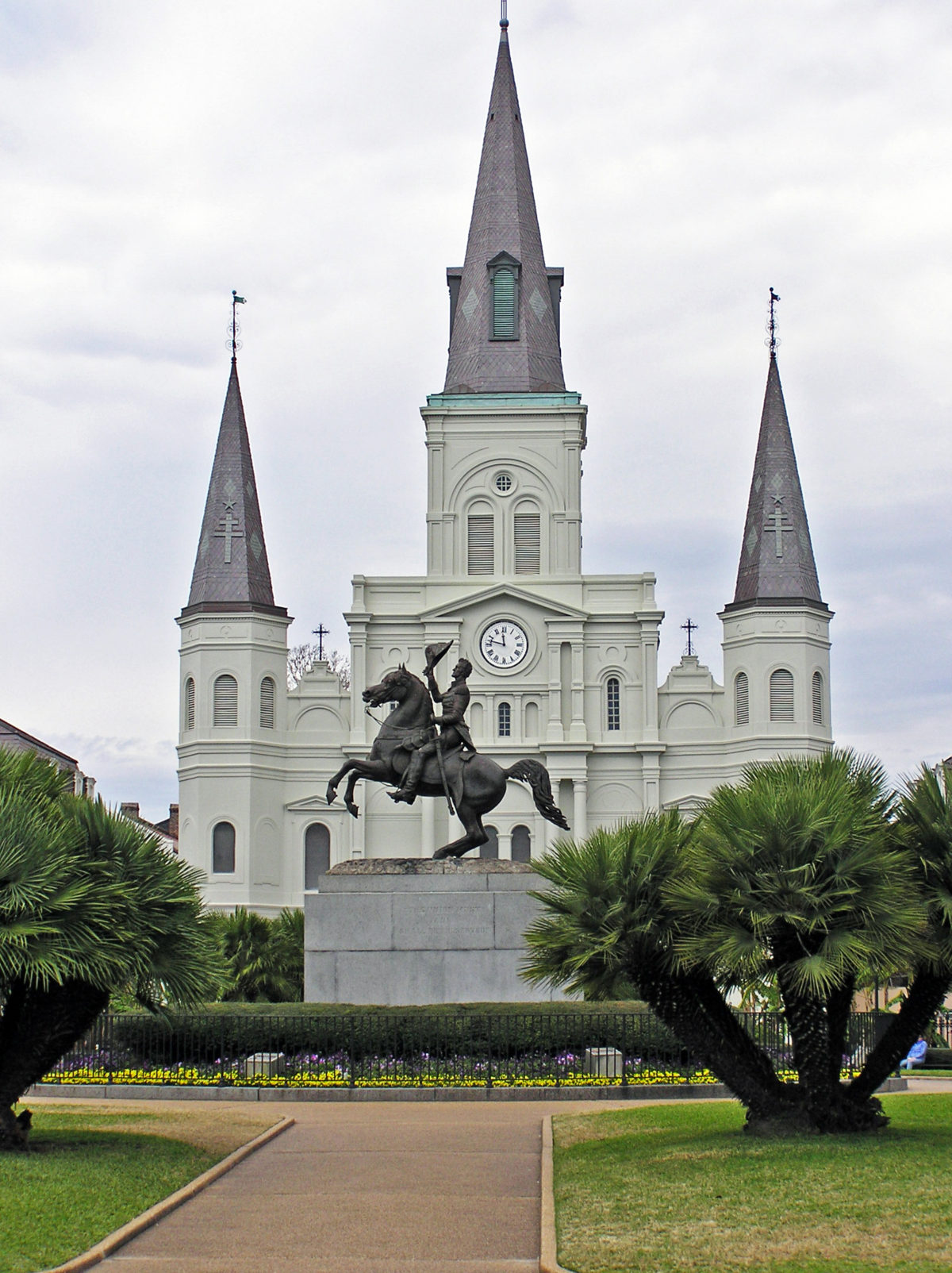
New Orleans. NOLA. The Big Easy. No matter what you call it, and no matter where your interests lie, the city has something for you. Food, drink, music, art, history, architecture, parks, festivals, cemeteries, voodoo, river boats, streetcars, endless parties, you name it. New Orleans has it all. In abundance.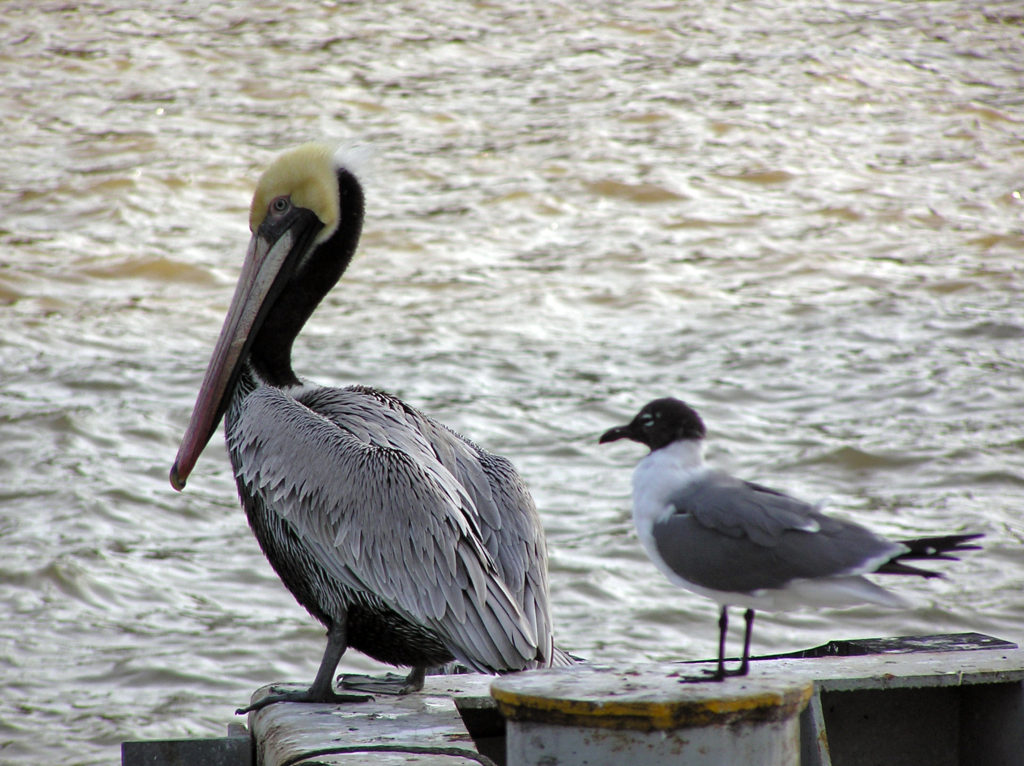
The city’s identity has been forged from many roots – French, American, African American, Native American, Haitian, and more. And those roots have produced many branches and have blossomed into something truly unique.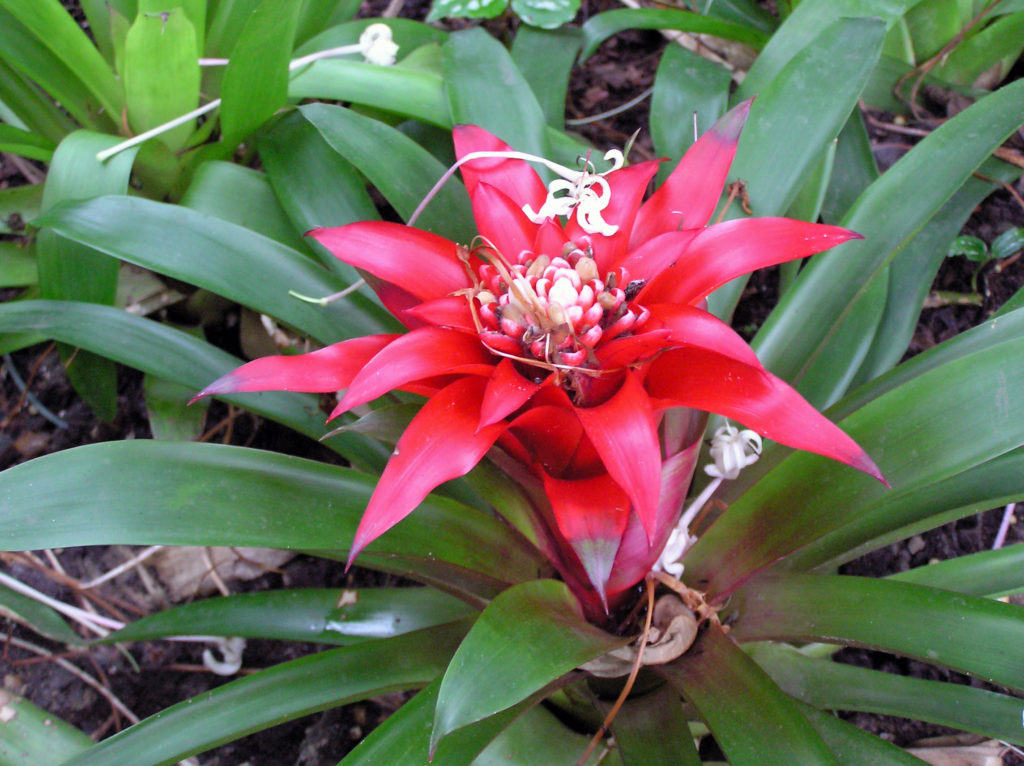
It’s been quite a while since I’ve been to New Orleans, but the ten days or so that my wife and I spent there left an indelible imprint on my psyche. The food, the music, the arts, the people. There is simply no place else like it in the U.S. Probably no place in the world. 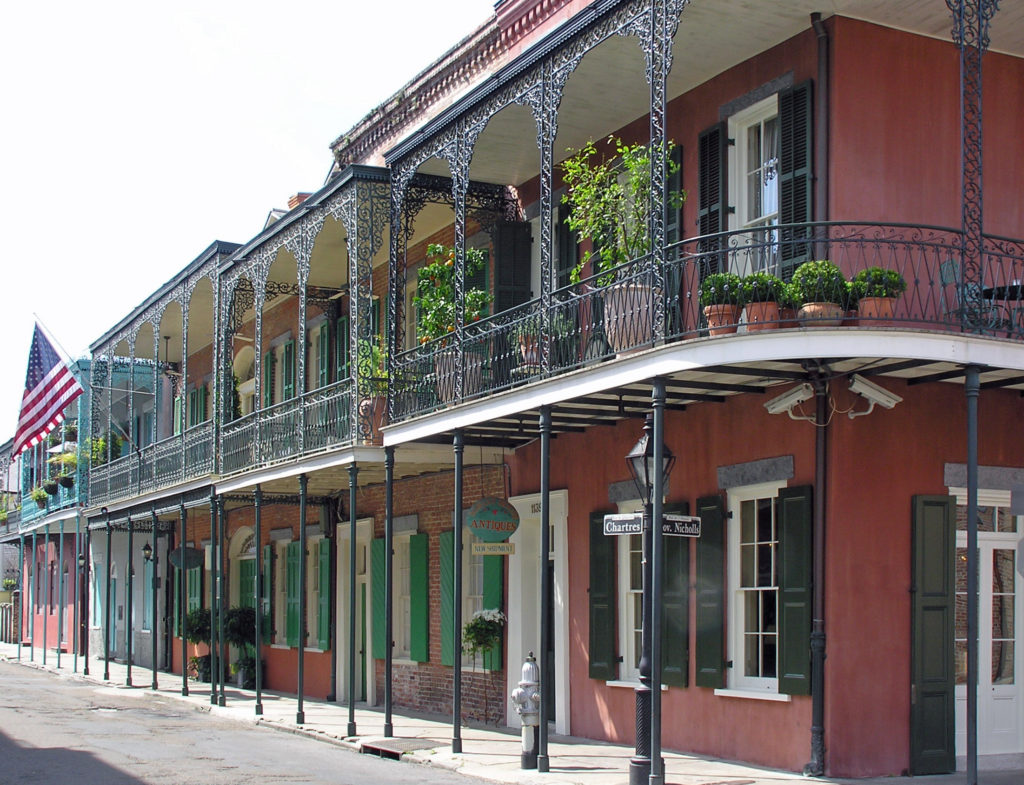
We spent our first day in New Orleans just wandering around the French Quarter with no agenda. We almost always allow ourselves time in a new city just to explore at random. We’ve had many memorable experiences that we would never have had if we had stuck to the guide book recommendations. But don’t throw away the guide books, either. Their recommendations are there for a reason.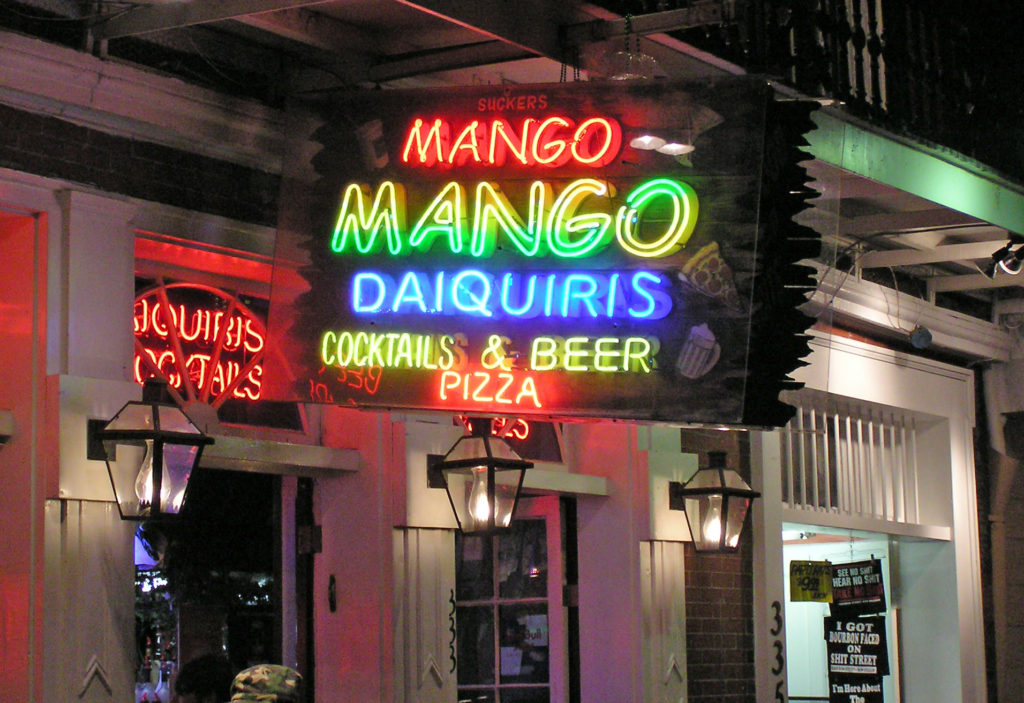

That first night, we wandered over to Bourbon Street to see what that is all about. We had a great time and we came back again another night. And, by all means, if you’re visiting New Orleans for the first time, venture into the French Quarter after dark and take in that giant street party. Get your Hurricane in a go cup and wander the street. Take in some of the live music, mingle with the other tourists, have another Hurricane, dance the night away. Get it all out of your system. But don’t think that’s the real New Orleans. Bourbon Street is the Disneyland version of the Big Easy.
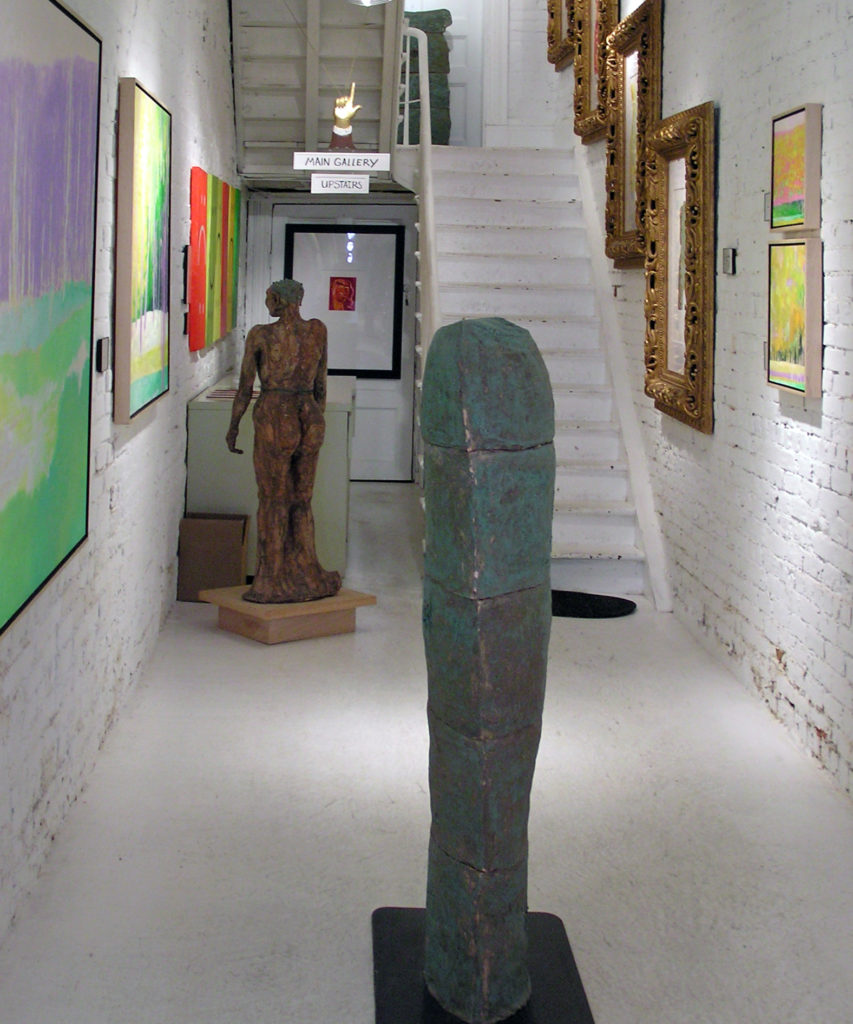 So, how to experience the real New Orleans? Well, you probably have to spend a year or two there to really get to know the city. It’s a complex place. But if you don’t have that kind of time, my first recommendation would be to find a place to stay in the French Quarter. It’s the historic center of the city and the city’s cultural heart. Most of what you’ll probably want to see and do you’ll find either in French Quarter itself or close by.
So, how to experience the real New Orleans? Well, you probably have to spend a year or two there to really get to know the city. It’s a complex place. But if you don’t have that kind of time, my first recommendation would be to find a place to stay in the French Quarter. It’s the historic center of the city and the city’s cultural heart. Most of what you’ll probably want to see and do you’ll find either in French Quarter itself or close by.
My wife and I stayed at a boutique hotel (I’ve forgotten its name) near the river, across the street from the House of Blues, for the first part of our stay. As I recall, it was a very nice and quite affordable place. But after a few days there, the hotel had some sort of plumbing system problem, necessitating our move to the Hotel Monteleone on Royal Street for the second part of our visit. The Monteleone turned out to be one of the better hotels we’ve stayed in, but there are plenty of other places to stay in the French Quarter. Check the French Quarter website for recommendations.
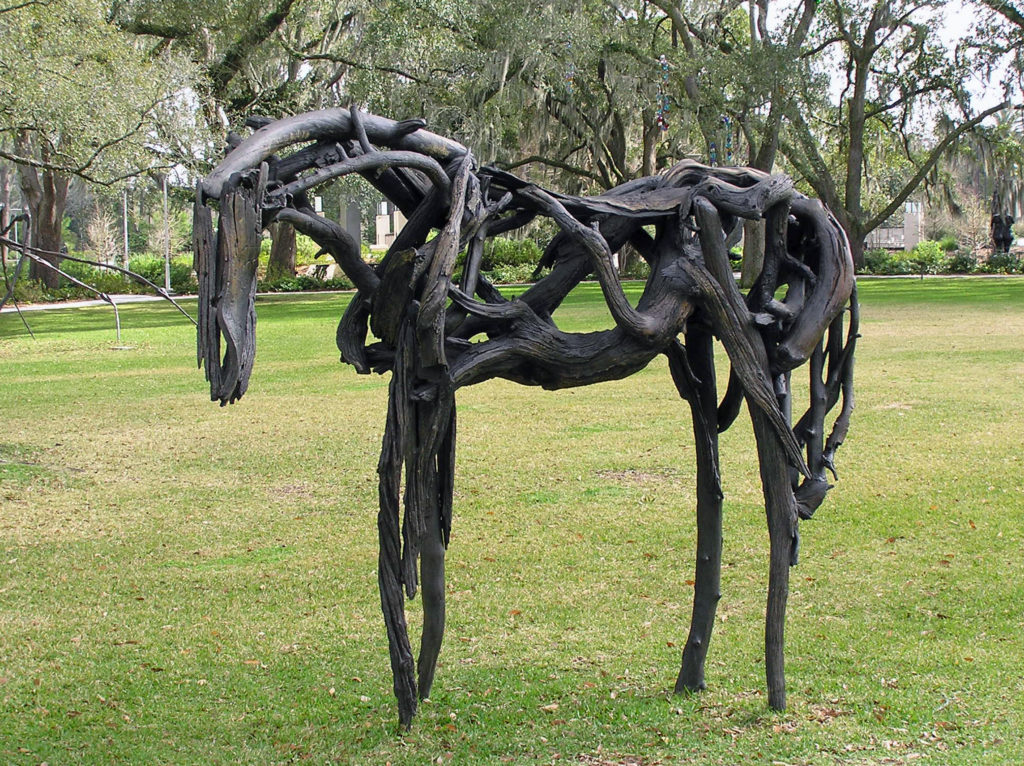 Since my wife and I are both art lovers, another thing that we always do in a new city is spend at least some time exploring the local arts scene. Sometimes that just entails visiting local museums and art galleries. But we also seek out local artists and art related events when we can. The New Orleans Museum of Art , located in City Park, and the adjacent Besthoff Sculpture Garden were two of our first stops, along with a number of galleries in the French Quarter. But we also took in an arts and crafts fair in Mickey Markey Park in the Bywater neighborhood, about a mile east of the French Quarter, where we met several local artists.
Since my wife and I are both art lovers, another thing that we always do in a new city is spend at least some time exploring the local arts scene. Sometimes that just entails visiting local museums and art galleries. But we also seek out local artists and art related events when we can. The New Orleans Museum of Art , located in City Park, and the adjacent Besthoff Sculpture Garden were two of our first stops, along with a number of galleries in the French Quarter. But we also took in an arts and crafts fair in Mickey Markey Park in the Bywater neighborhood, about a mile east of the French Quarter, where we met several local artists.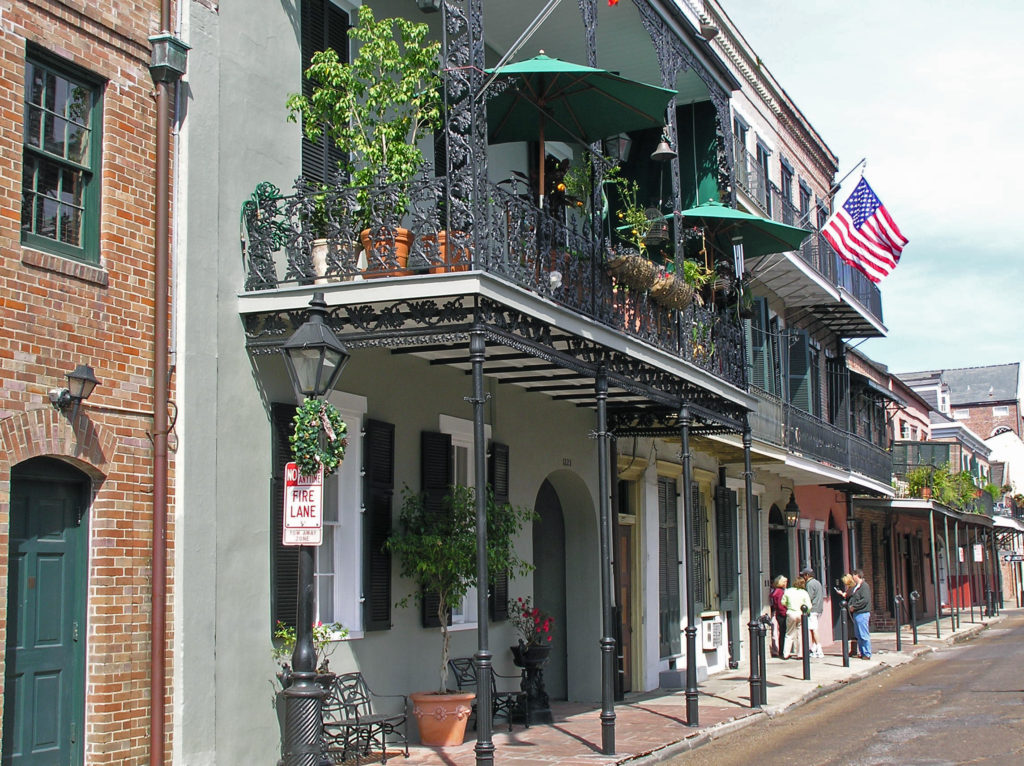
I won’t spend much time here trying to give you a guide to the French Quarter. There are plenty of guide books and online guides that will do a better job than I can. But there are tons of things to see and do in the Vieux Carre and you could spend your entire visit there and not get bored. Plan to spend at least a full day, and preferably a couple of days, exploring the French Quarter on your visit.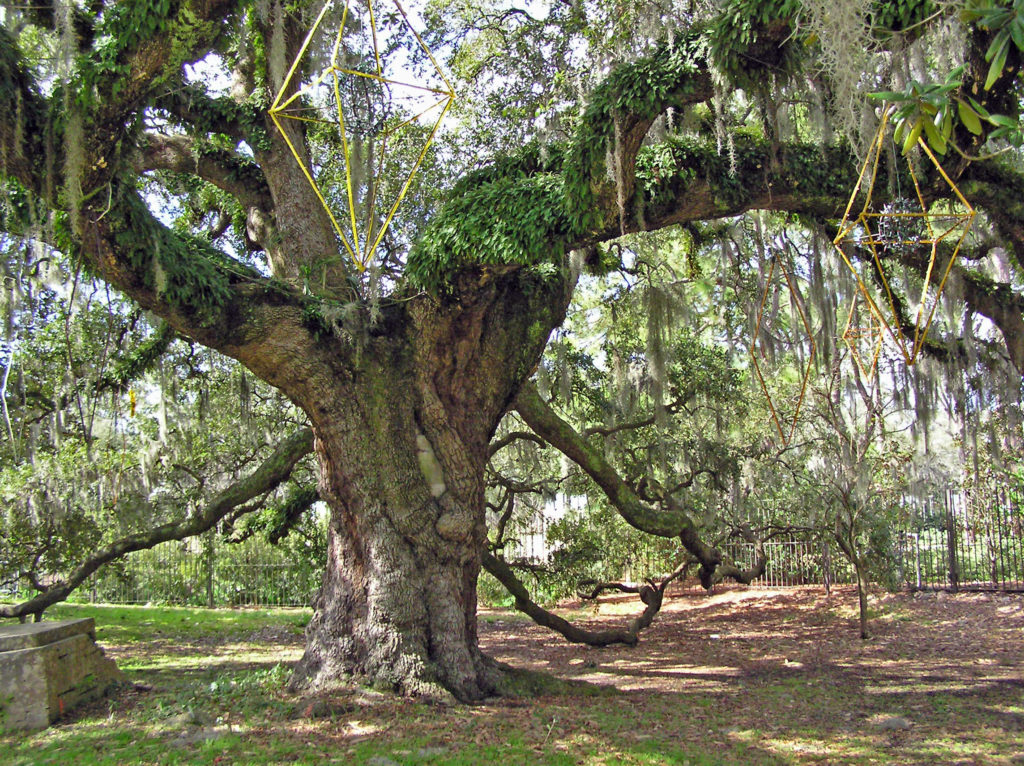
But if you really want to sample what New Orleans has to offer, and have the time, I recommend that you also go beyond the French Quarter. Visit City Park and Audubon Park. Take a walk through the Garden District. Take the ferry across the river to the Algiers neighborhood. Visit one of the city’s famous cemeteries. Take a cruise on the Mississippi in a paddle wheeler. Check out the Treme and Marigny neighborhoods. Even go beyond the city itself and take a swamp tour or a plantation tour.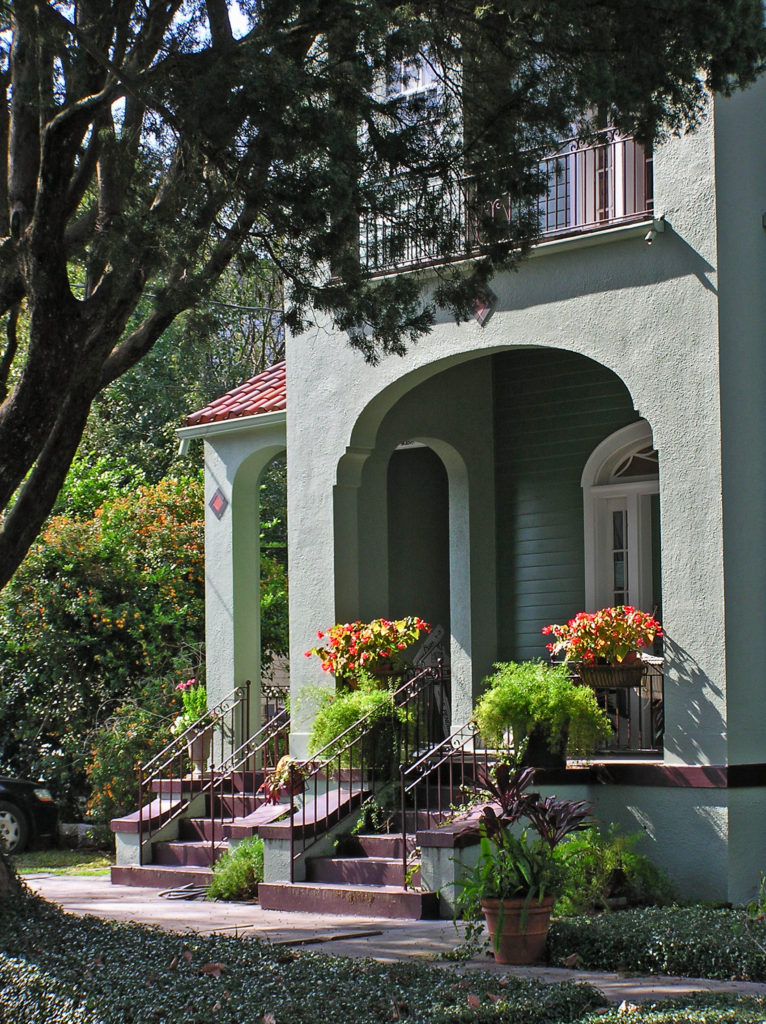
We spent one afternoon exploring the Algiers neighborhood across the river from the French Quarter. Take the ferry from the terminal at the foot of Canal Street. It’s a short but scenic ride and Algiers is an interesting place. Check out the Jazz Walk of Fame next to the ferry terminal. Take a walk along the levy on the Mississippi River Trail. Stop in at one of Algiers many restaurants and bars, such as the Dry Dock Cafe, the Old Point Bar, Tout de Suite Cafe, or the Crown and Anchor English Pub. And just walk around the neighborhood. As I said, it’s an interesting place, full of beautiful old houses and impressive buildings.
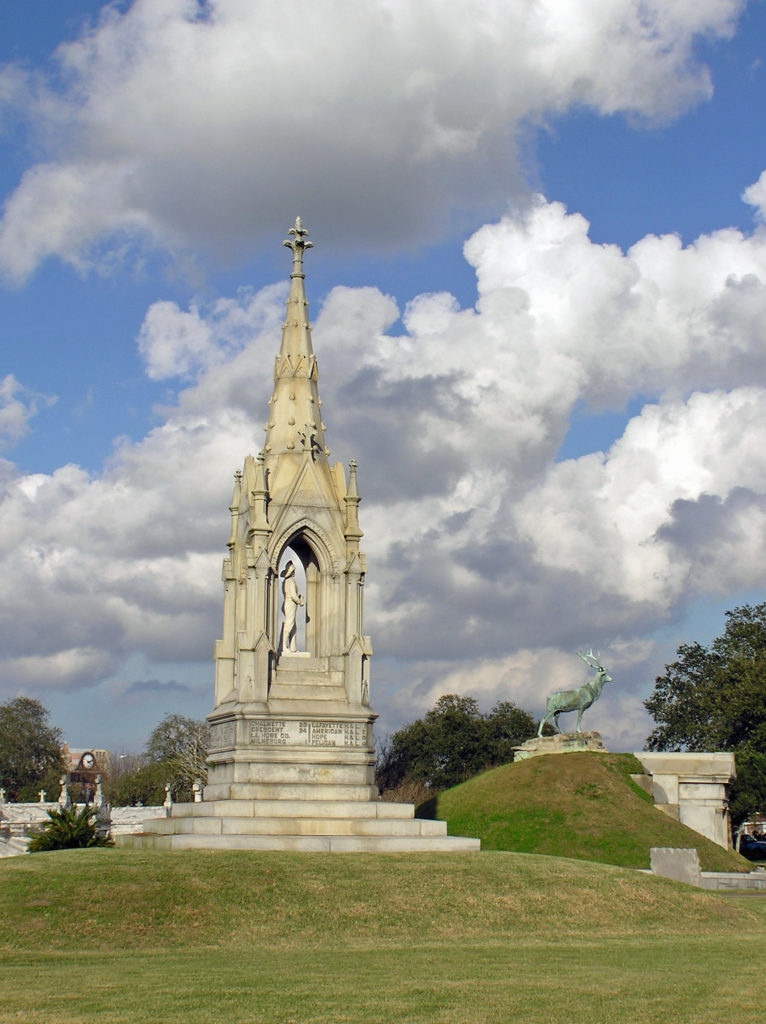 Touring one of the city’s many cemeteries turned out to be one of the more interesting things we did on our visit. Because the land New Orleans is built on was originally a swamp, and much of it is below sea level, the dead are not buried in the ground, but are interred in above ground crypts or tombs.
Touring one of the city’s many cemeteries turned out to be one of the more interesting things we did on our visit. Because the land New Orleans is built on was originally a swamp, and much of it is below sea level, the dead are not buried in the ground, but are interred in above ground crypts or tombs.
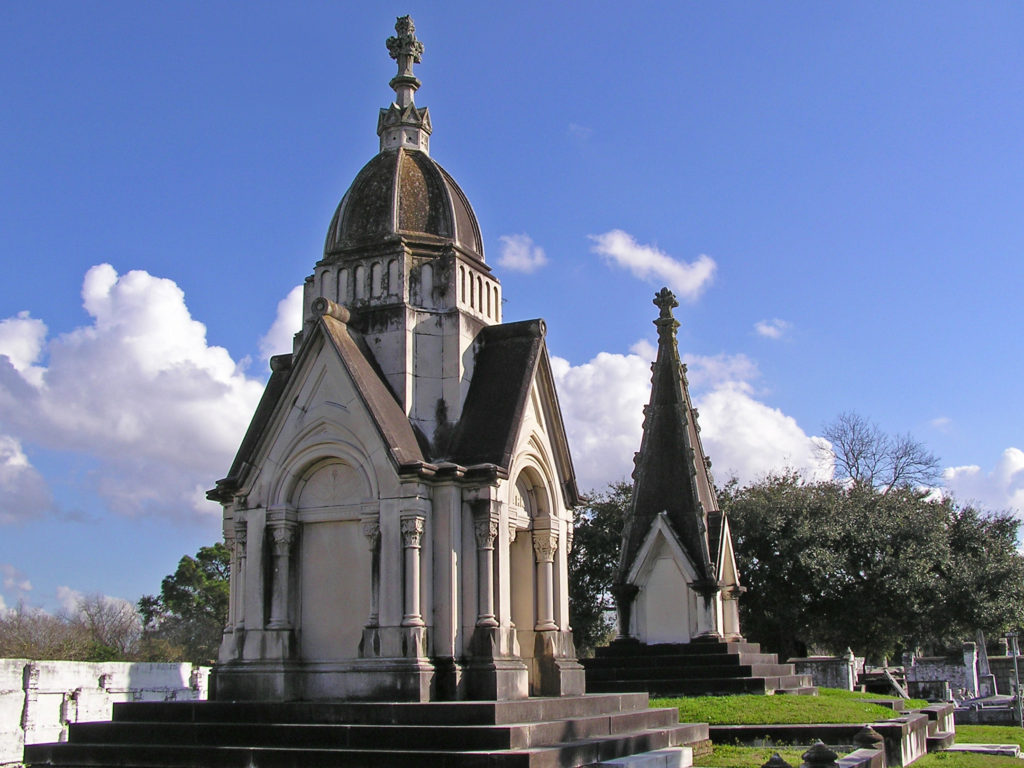 When we were there, we were warned that some of the cemeteries were dangerous places to visit and should be avoided. That may have changed, but check before you venture into any of the city’s cemeteries. There are organized cemetery tours that you can take, but we preferred to go on our own. One of the cemeteries that was said to be safe, and the one we visited, was St. Patrick Cemetery No. 1, on Canal Street near the end of the streetcar line.
When we were there, we were warned that some of the cemeteries were dangerous places to visit and should be avoided. That may have changed, but check before you venture into any of the city’s cemeteries. There are organized cemetery tours that you can take, but we preferred to go on our own. One of the cemeteries that was said to be safe, and the one we visited, was St. Patrick Cemetery No. 1, on Canal Street near the end of the streetcar line.
 Many of the tombs there are large, elaborate, and impressive, holding the remains of many generations of the same family. The larger and more ornate ones are generally well kept up, but many of the others have not been maintained and are crumbling. Many are just ruins, empty and abandoned. One has to wonder what became of the bodies.
Many of the tombs there are large, elaborate, and impressive, holding the remains of many generations of the same family. The larger and more ornate ones are generally well kept up, but many of the others have not been maintained and are crumbling. Many are just ruins, empty and abandoned. One has to wonder what became of the bodies.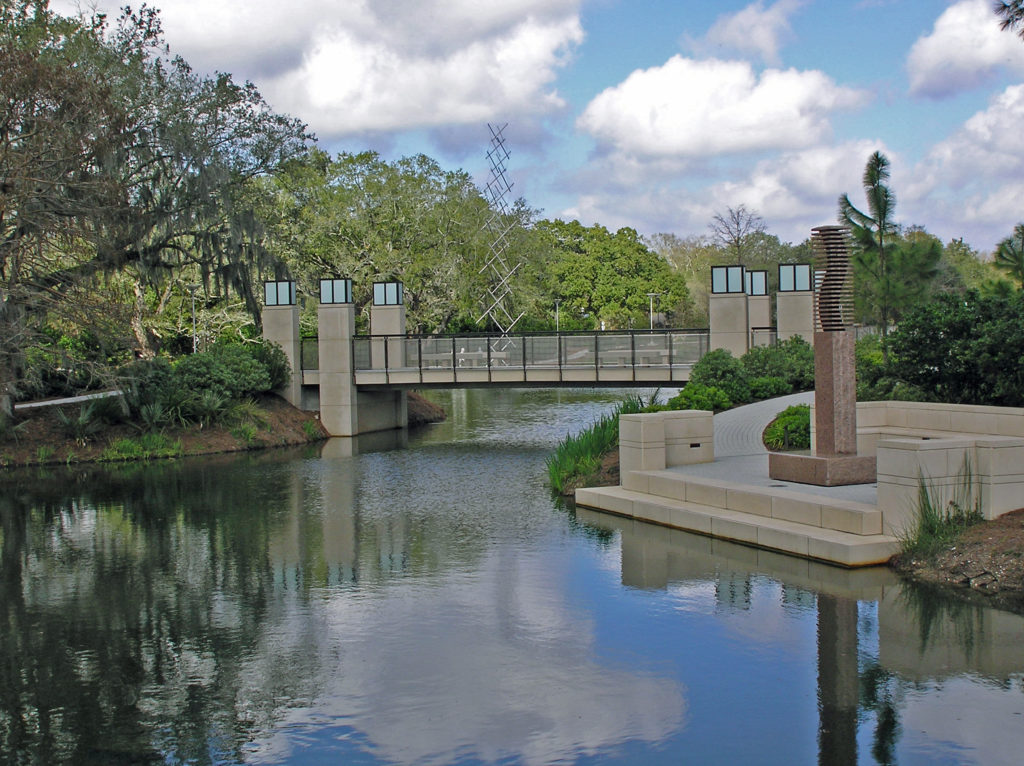
Visiting some of the city’s parks also turned out to be one of the more worthwhile ways we found to spend our time. There are a number of parks in the city that are worth a visit. Jackson Square in the French Quarter, and Louis Armstrong Park, on Rampart Street in the Treme neighborhood adjacent to the Quarter, should be on everyone’s agenda.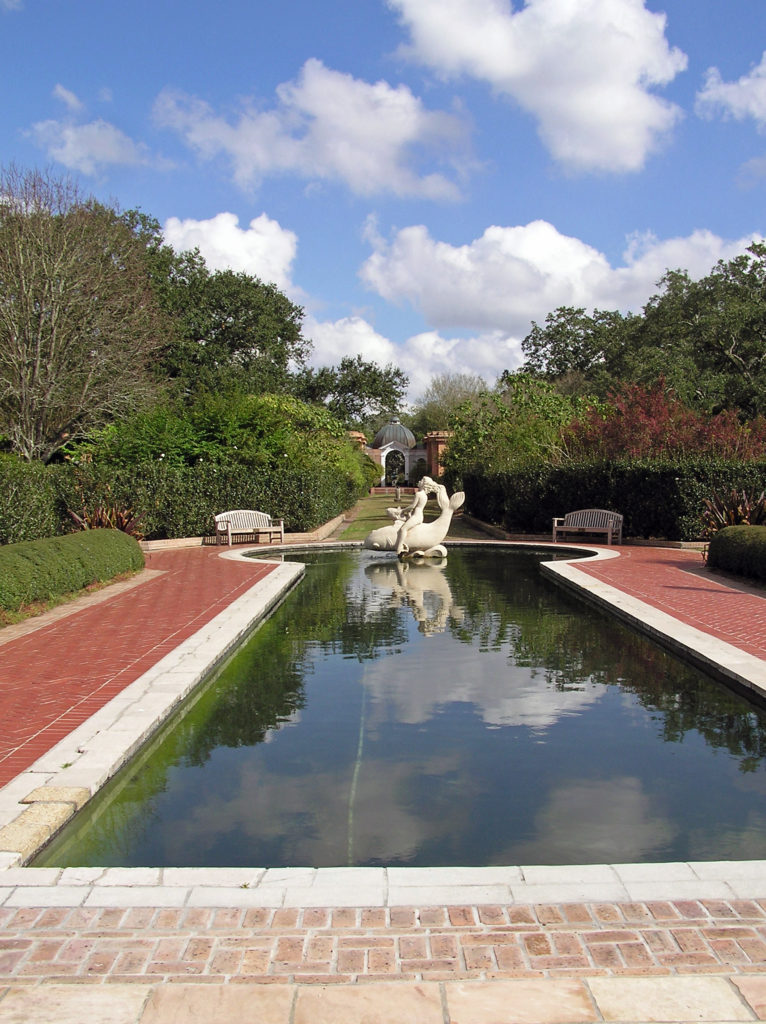
City Park , about two miles north of the French Quarter, and Audubon Park, a couple of miles west of the Quarter, both have attractions for the whole family. Besides being home to the New Orleans Museum of Art, City Park is also home to the Louisiana Children’s Museum, a short walk from NOMA, and the New Orleans Botanical Garden. And Audubon Park is home to both a zoo and an aquarium. Both parks also feature nature trails, beautiful ponds, magnificent live oaks draped in Spanish moss, and many other attractions. Both City Park and Audubon Park are easily reached from the French Quarter by the city’s streetcar lines.
Think of New Orleans and Mardi Gras is probably the first thing that comes to mind. Mardi Gras has been celebrated in Louisiana since at least 1699, before the founding of New Orleans. It is celebrated in many other communities, but the New Orleans festivities are the quintessential Mardi Gras celebrations. We were there a week or two after the end of Mardi Gras, so I can’t give you an eye witness account of what Mardi Gras is actually like. But it is a festival that I would like to experience some day.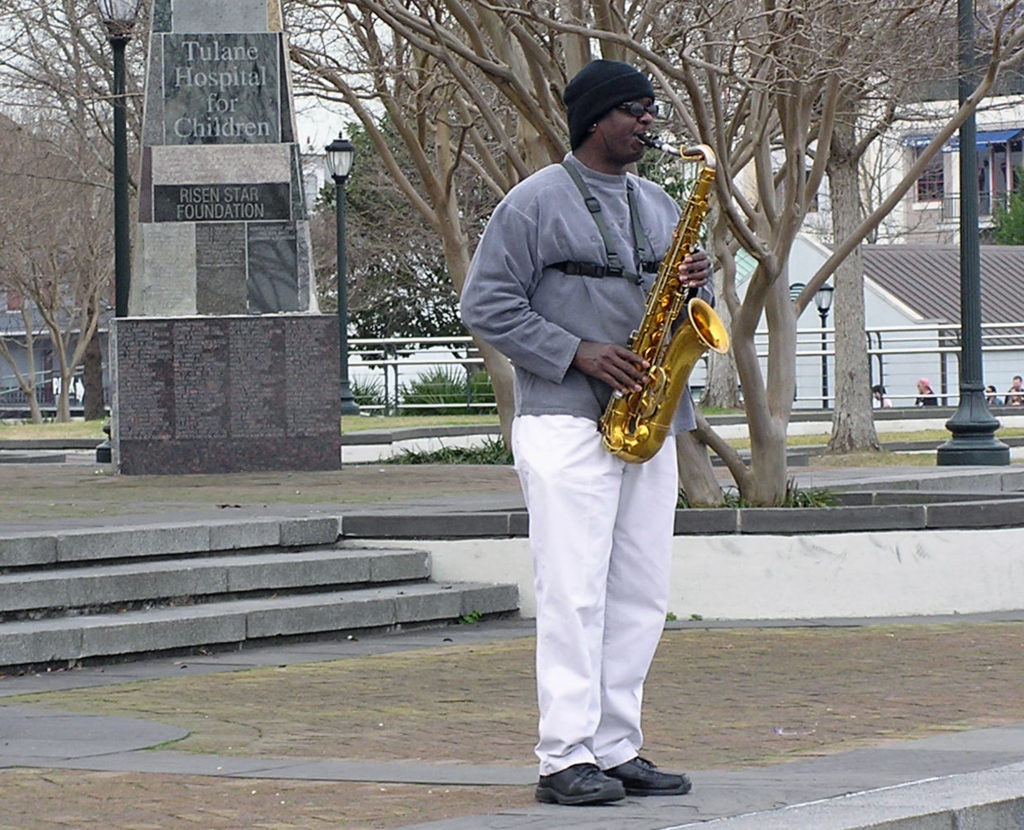
The other New Orleans festival that I would dearly love to take in is the New Orleans Jazz and Heritage Festival, held each year in late April and early May. This may actually be a bigger tourist draw than Mardi Gras. As many as 650,000 people have attended in past years.
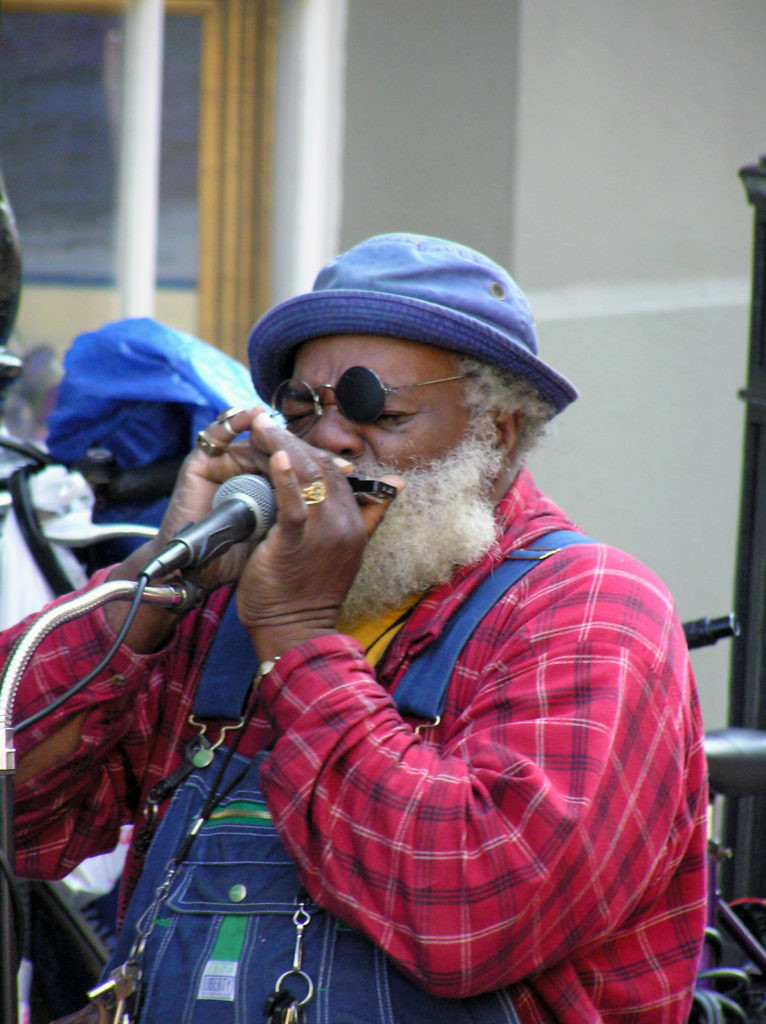 Music is an essential component of the spirit of the Big Easy. Whether it’s traditional Cajun fiddle tunes, blues, jazz, swamp rock, zydeco, country, or a fusion of some or all of those genres, music permeates the city. Street performers are a common sight in the French Quarter any time of the day or night. And there are probably hundreds of clubs throughout the city offering live performances late into the night, every night. Take in as much of the music as you can while you’re there because it’s such a vital component of the city’s spirit.
Music is an essential component of the spirit of the Big Easy. Whether it’s traditional Cajun fiddle tunes, blues, jazz, swamp rock, zydeco, country, or a fusion of some or all of those genres, music permeates the city. Street performers are a common sight in the French Quarter any time of the day or night. And there are probably hundreds of clubs throughout the city offering live performances late into the night, every night. Take in as much of the music as you can while you’re there because it’s such a vital component of the city’s spirit.
There’s plenty of music to be heard on Bourbon Street, but there are more authentic venues elsewhere. Preservation Hall, in the French Quarter, is probably the most famous. Tipitina’s, on Napolean Avenue about a mile and a half west of the French Quarter, might be the most highly regarded club. The Spotted Cat Music Club, the Blue Nile, and d.b.a., all on Frenchmen Street in the Marigny, are three of the most highly regarded clubs. Le Bon Temps Roule, near Tipitina’s, and Chickie Wah Wah, on Canal Street in Mid-city, are a couple of other well regarded venues. In the French Quarter, check out One Eyed Jack’s.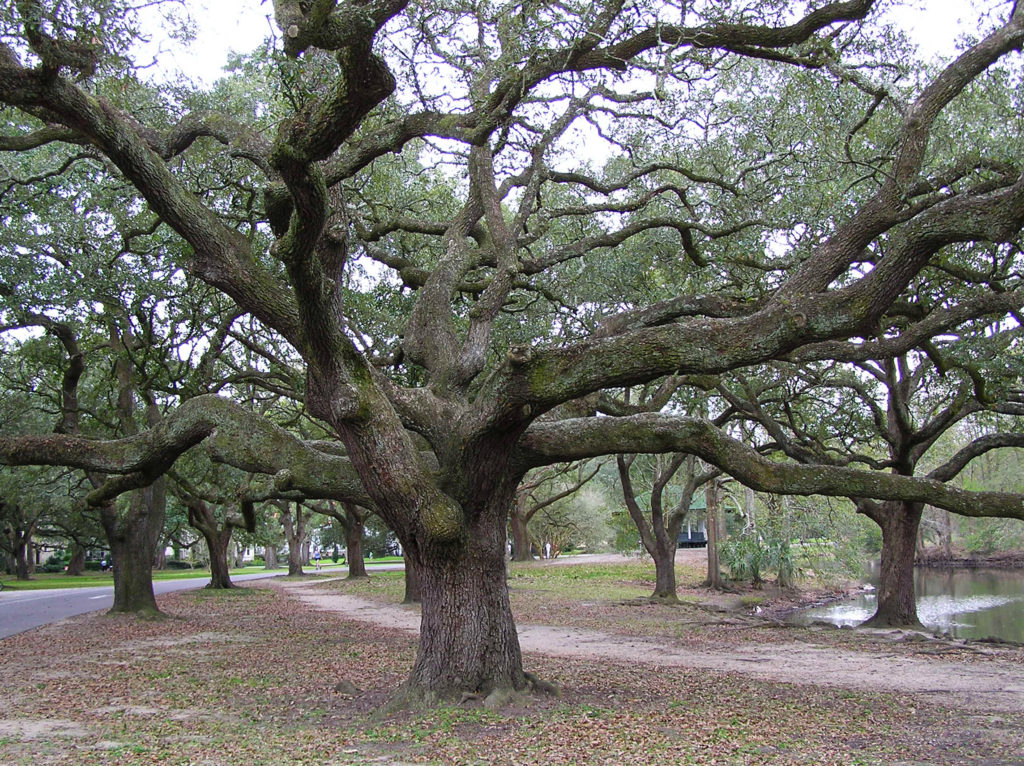
Like music, the cuisine of New Orleans is one the city’s defining features. I fell in love with the food when we were there, and gumbo and jambalaya have become mainstays in my home kitchen. The Foodies Guide to New Orleans website will give you a good overview of the city’s culinary offerings. The people of New Orleans are passionate about their food and anyone you talk to will probably be happy to steer you to some great places to eat. Or you can book one of the many food tours that are available.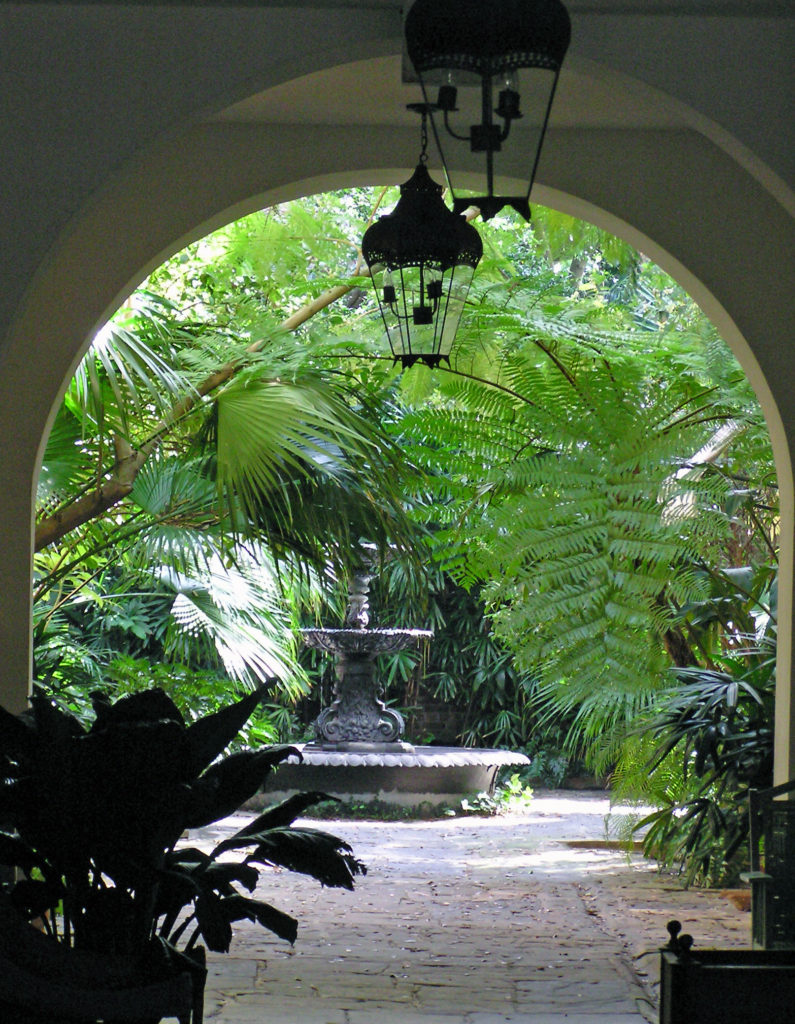
The food scene has probably changed a lot since we were there, but there are some iconic New Orleans eateries that you might want to check out. The Cafe du Monde in the French Market is one of those. It’s been a New Orleans institution since 1862. Go for the beignets and the coffee with chicory because that’s about all they serve. And go early. You’ll probably still have to wait in line to get in, but it’s an iconic New Orleans experience that shouldn’t be missed. And dinner at Antoine’s was a highlight of our stay. Antoine’s has been in existence even longer than the Cafe du Monde. They’ve been serving French Creole food in the same location since 1840. There’s no place in New Orleans more steeped in history than Antoine’s.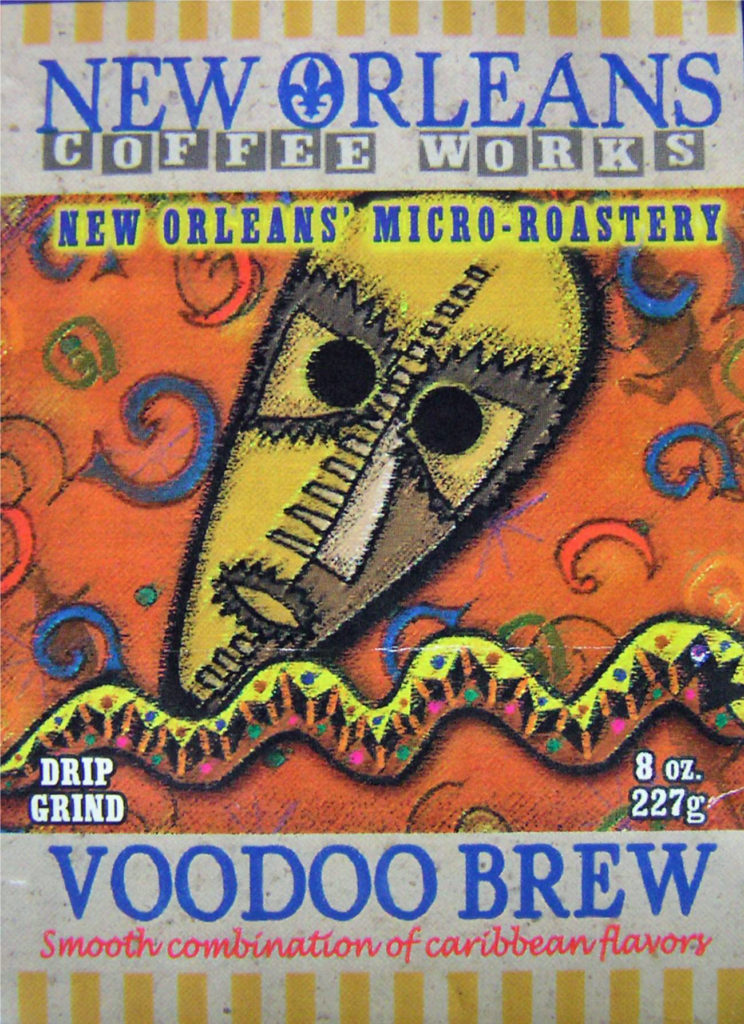
And then there’s voodoo. Personally, I have no interest in voodoo, but it’s another unique component of the culture and you can’t ignore it completely if you want to get the full New Orleans experience. You might just want to stop in at one of the many shops in the French Quarter selling voodoo related trinkets. Or maybe delve deeper into the history and practice of voodoo by visiting the Voodoo Museum or taking a voodoo tour.
New Orleans can’t be adequately described in words or pictures by any means. It really has to be experienced. It blends the Old South charm of places like Charleston and Savannah with the party atmosphere of places like Key West, and mixes in a whole lot more to boot. You should make the pilgrimage to the Big Easy at least once in your life. You won’t regret it.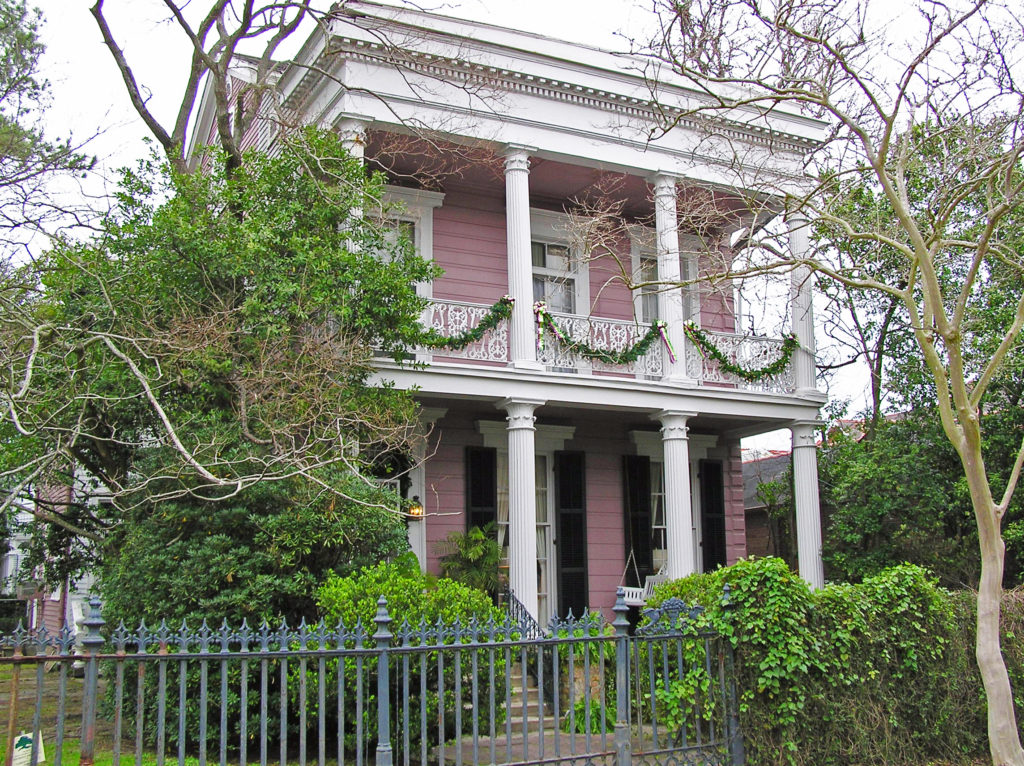
Originally posted January 9, 2021 by Alan K. Lee. Updated and re-posted January 10, 2024.
All photos © Alan K. Lee

